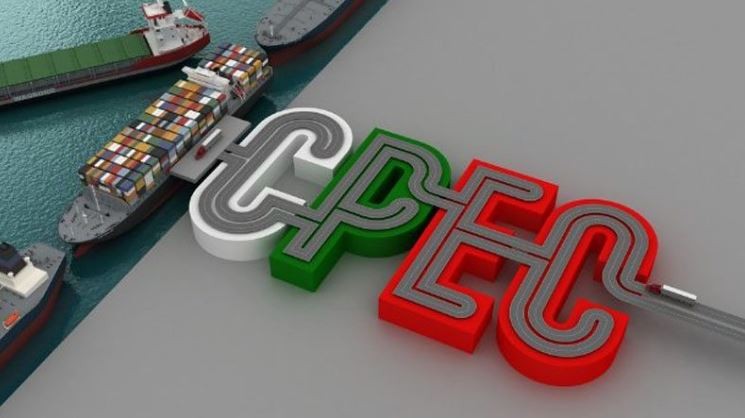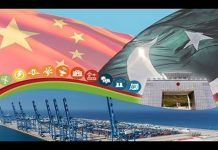
Each day we come across with so many questions raised about the fate of CPEC. Most of them are based on the myths rather than facts. The CPEC is an equal opportunity for the whole region. The one plus four portfolios (CPEC, energy, infrastructure, industrial cooperation and Gwadar) is a package of economic activities. No doubt it can be considered as a real game changer for Pakistan. But it is not manna from heaven. Like the rule of the game, every player must play its role. Rather than hue and cry, we must face the challenges ahead of us and accordingly devise the coping up strategies.
Pakistan is a low saving and investment depressed economy. The economy is facing many challenges including acute energy shortage, terrorism, fiscal and trade deficits, mounting debt, low productivity, underdeveloped infrastructure, and lack of competitiveness.
The CPEC initiative is directly addressing the issues of energy and infrastructure development, fast communication system, investment, industrial cooperation and enhancement of trade and tourism. The major chunk of the package i.e. three forth has been devoted to the energy sector. CPEC is a sustainable oriented project its Long-Term Plan (LTP) gives the equal importance to economic, social and environmental components of sustainable development in its implementation. The early harvest (2018) and short-term plans (2020) of CPEC aim to address the most key economic bottlenecks; energy crisis and weak infrastructure.
The opportunities are enormous but there are challenges too. The countries all over the world have shown their interest to be a part of this consortium. However, the state of human capital requires special attention as far as the relocation of Chinese industry and FDI are concerned. It is the fact that the FDI may become counterproductive due to underdeveloped human capital. Similarly, industry is relocated in the areas which having low cost of production. The skilled and educated labour is a key factor in achieving the said goal. Pakistan has comparative advantage in terms of geo-strategic location and cheap labour. But the big challenge is to enhance the productivity at large. Though in nominal terms the labour is low-priced in Pakistan yet it is expensive on real grounds. The issue is the contribution of labour in overall output. Knowledge, skill and above all the attitude towards work are the sources of growth in productivity. The CPEC initiative can turn into fate changer for Pakistan if we work hard and do target oriented tasks. Rather than pointing out the problems we should suggest the possible solution. For example, there can be setting up of the vocational and professional training institutes in collaboration with China. Through the knowledge spill over effect and following the best practices of China which make it the second largest economy in the world. The CPEC’s impact on the region in general and specific to Pakistan must be holistically evaluated.
The economic revival will set in when the energy crisis will be resolved and proper infrastructure will be established within next few years. It is evident that physical infrastructure not only promotes economic growth but also generates employment.
The returns and gains from CPEC hinge upon both demand and supply factors. The supply side includes the provision of energy and availability of infrastructure. The supply side has reasonably addressed. But the studies show that mere supply side is not enough to bring in the required results for example in terms of enhanced productivity. The demand side is equally important. The low factor demand in terms of low labour productivity, acceptance for change, attitude towards work and low inclination to acquire knowledge are the major impediments to develop the human capital – the major driver of sustained economic development.
CPEC is an equal opportunity not only for Pakistan but also for the regional and neighbouring countries like India, Afghanistan and Iran etc. Both inter and intra connectivity in terms of reduction in transportation and transaction costs would enable the economies to enhance trade and investment and accelerate the economic growth. This growth process would be more inclusive and more sustainable. However, the gains hinge upon hard work, dedication, mutual trust and harmony. It is a necessary condition (hardware in terms of physical infrastructure) but the sufficient condition (software side of the economy i.e. human capital) is desperately needed to improve.
Published in Daily Times on 1st June 2018

 中文
中文 Urdu
Urdu











